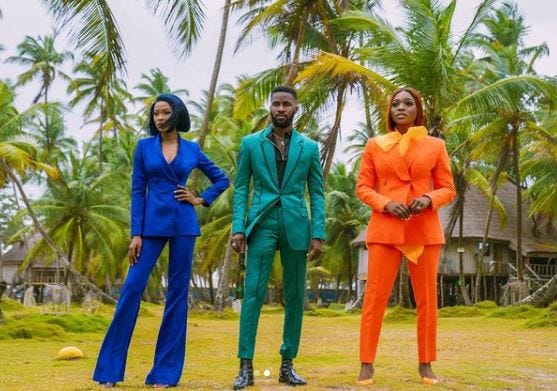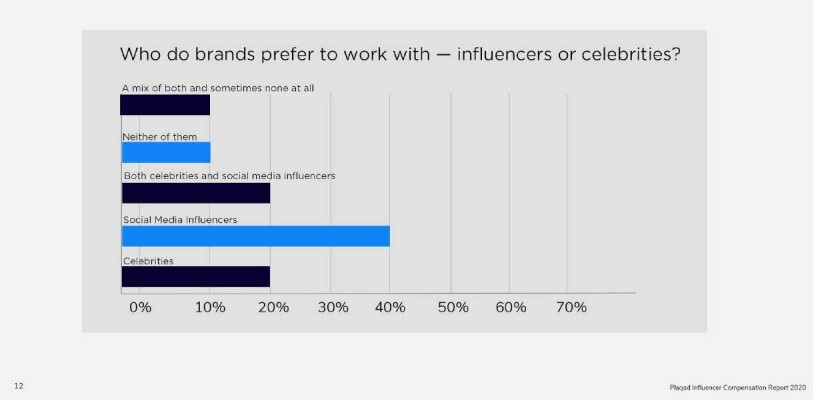Influencer Marketing: driving business growth
Influencer Marketing is a >$10bn business as of 2020. According to Statista 2021 report, between 2019 and 2021, it grew from 6.5 billion to 13.8 billion U.S. dollars in the three years alone.”
Before you dive in...
+ Influencer Marketing is a >$10bn business as of 2020.
+ “Between 2019 and 2021, [influencer marketing grew] from 6.5 billion to 13.8 billion U.S. dollars in the three years alone.” – Statista, 2021
+ Consumers sometimes see influencers as key opinion leaders (KOL).
This is influencer marketing.
Influencer marketing is not generally a new concept or idea despite being in its nascent phase in Africa. With bits of search, you would come up with Payperpost - one of the earliest influencer marketing companies. This was before influencer marketing became a thing-thing.
Now, that's out of the way. Let's go.
Some call it branded content or working with 'creators'. It is safe to say creators = influencers. Period.
This is Influencer marketing— a dependable way brands expand their reach on social media. I said dependable because that is what is expected unless it was done wrong.
When it comes to using influencers to power a brand, there’s no one-size-fits-all approach. With the right planning and research, just about every business – small and great, can benefit from using the strategy.
The emergence of the coronavirus pandemic accelerated the employment of influencer marketing in many ways, as consumers and brands sought unscripted, authentic content.
Some breakdown…
There are two words married here – 'influencer and marketing'. In a plain description, an influencer is someone who can influence others. Marketing is getting words about a business out to reach more people. Therefore, influencer marketing is when the influential person partners with a brand to promote something – usually to a defined goal.
Celebrity endorsements can be said to be one of the widely known original forms of influencer marketing. It is different today. Social content creators with niche audiences have been seen to often offer more value to brands. Why? They have dedicated and engaged groups of followers.
The market is rapidly expanding as influencer types have multiplied, with influencers filling every conceivable niche and sub-niche interest. Each of these types offers distinct benefits and trade-offs for brands.
The influencer marketing technique - if properly executed, is one of the effective marketing strategies that reach direct customers.
More sectors are embracing it to drive their brand value
The Financial Times predicts that the value of the global influencer market will reach $15 billion by 2022.
Influencer marketing hub reports that the influencer marketing industry is set to grow to approximately $13.8 Billion in 2021.
The finance sector is yet to fully employed the use of influencers to drive their businesses. The issue here could be the word - ‘endorsement’. Brands don't want to get into a legal fight because of misrepresentation by an influencer or misinterpretation by the consumers. Though, we are beginning to see stuff from them as they learn how to navigate the space e.g. VFD and Don Jazzy.
Health is another sector not well represented. (We should talk about the legal part of these things in a future post.)
Everything is looking beautiful. As e-commerce and social media connect (social marketing! or social selling???), influencers will become increasingly vital in helping to connect brands with consumers in a more authentic way that can deliver better returns.
There are two primary ways of categorizing influencers: reach and niche
+ Reach: nano, micro, macro and mega influencers. As a general rule (remember: no one size fits all), targeted reach, cost-effective, engagement, authenticity and accessibility all go up as follower count goes down.
Nano Influencers: 10,000 followers or fewer
Micro-Influencers: 10,000 to 100,000 followers
Macro Influencers: 100,000 to 1 million followers
Mega Influencers: 1 million+ follower
+ Niche: Brands can leverage relevant niche influencers to more intentionally target audiences.
*Consider this the holy grail of influencer marketing: finding the sweet spot of convergence where an influencer with the right reach and niche can power a brands product or services.
What report says – using the PLAQAD 2020 Compensation report
Carry PLAQAD. According to the report, 40% of brands preferred to work with influencers versus regular celebrities. 100% of influencers want to be compensated for work done and delivered. More influencers are open to being compensated with products and services in place of cash payment with 18.6% - an increase from 13% in 2019, willing to accept the product and complimentary services from brands.
Let’s talk payment. Influencers want a stable and regular paycheck. Only 43% of brands/agencies pay immediately with 27% of macro-influencers said they get paid upfront. 41% of influencers want to get paid per post, 38% want to get paid per campaign while 11% simply wants a flat fee. Brands and agencies want – ‘per campaign’.
More numbers. 35.7% of influencers want to get paid before the start of a campaign, 46.3% wants their money immediately after a campaign ends while 15.8% can manage a 7-day extension to get their money after the campaign ends. But, brands and agencies prefer 45 to 60 days after the campaign to pay. This could be a result of broken analytics associated with running a campaign. Or just agencies usual payment circle thing associated with agencies.
Measuring ROI. It is a known struggle to measure the ROI of an influencer campaign. It is even more difficult when a brand works with more than one influencer on the same campaign – how do you know which drives more engagement? The PLAQAD report stated that a whooping (in their own words…) “77.8% cannot tell in actual terms the impact of their influencer marketing spend on the overall business objectives”.
The Consumers. The goal of driving a campaign is to grab market share. And that means consumers money or attention. This could be from sign-ups, purchases, awareness and others. Three people are in the loop – brand, influencer and influenced. 42% of surveyed consumers make decisions based on influencer recommendations. 40% of these consumers want influencers to disclose brand promotions/sponsorships.
Influencer Marketing Tools in Africa: from platform to front and back-office
Following a global influencer marketing platform report by Markets and Markets; “the global influencer marketing platform market size to grow from USD 6.0 billion in 2020 to USD 24.1 billion by 2025, at a Compound Annual Growth Rate (CAGR) of 32.0% during the forecast period”.
Many reasons have contributed to the increase of startups offering other ways for creators to make money and for brands to effectively calculate campaign ROI. Companies like PLAQAD makes it easy for brands and agencies to effectively measure a campaign effort while exposing influencers to better deals. Other companies are taking care of the backend like payment, invoicing, taxation etc.
Let’s take a look at some of them…
Humanz: AI-powered platform aimed at combating influencer fatigue while also measuring true ROI and creating a safe and seamless end-to-end experience for all parties involved.
Tribahl: partner with Africa’s top media, entertainment and lifestyle influencers to create entertaining content that meets our client’s marketing objectives.
PLAQAD: provides influencer marketing, paid media distribution, content creation and media intelligence – offering a faster, seamless and cost-effective way to do marketing.
Alfluence: uses Artificial Intelligence-driven to accurately match influencers with brands, monitors & manages high impact audience-based campaigns in real-time.
Buzzbite: a self-service influencer marketplace for Consumer Brands looking to reach audiences in the African Market.
Extra:
FYPM: (F*** You Pay Me = FYPM). The platform lets influencers anonymously spill the dirt’s about their brand deals, like how much they were paid and what was asked of them.
Is influencer marketing effective?
As per available reports, the influencer marketing industry has exceeded $10 billion in 2020 and nearly 40% of marketers don’t feel confident in their ability to report influencer marketing ROI.
Part of the issues has been working with the right influencer, work on the right KPI's and efficiently calculating ROI. Also, there is the challenge of the ability of influencer relationship managers to demonstrate that performance in dollars and cents. Talk about ROI.
What to track and report as a marketer
+ Influencer discovery
+ Influencer analysis
+ Influencer management
+ Campaign workflow
+ Campaign analytics
References:
https://thebestofafrica.org/content/is-influencer-marketing-effective
https://www.ft.com/content/834cc9ce-3ba2-11ea-b84f-a62c46f39bc2
https://influencermarketinghub.com/influencer-marketing-benchmark-report-2021/







